22 January 2017
I’ve recently discovered the pleasures of the Fortunato No. 4. Not quite the newest perfume from Chanel or a lost piano concerto from Mozart. Brought back from the brink of extinction, it’s touted to be the rarest on earth and a direct descendent of the original from a century ago.
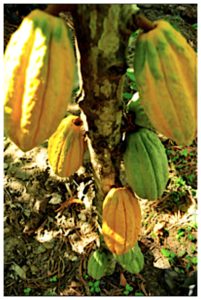 The Fortunato No. 4 is Pure Nacional Cacao. Why the fascination and hype, you may ask? You may recall, in my post “Let’s Talk About: Cocoa Beans“, that I discussed the three key varieties of cocoa or cacao beans – Forastero, Criollo and Trinitario. Some consider the Nacional to be the stand-alone fourth variety, which has created much controversy but also excitement in the chocolate world.
The Fortunato No. 4 is Pure Nacional Cacao. Why the fascination and hype, you may ask? You may recall, in my post “Let’s Talk About: Cocoa Beans“, that I discussed the three key varieties of cocoa or cacao beans – Forastero, Criollo and Trinitario. Some consider the Nacional to be the stand-alone fourth variety, which has created much controversy but also excitement in the chocolate world.
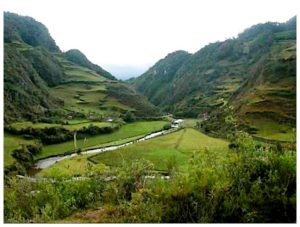 Re-discovered in the Maranon Canyon in Peru less than 10 years ago, the Fortunato No. 4 derives its name from the owner of the property from which the “mother tree” was found – Don Fortunato and the number of the sample tested and verified by the United States Department of Agriculture (USDA) to be genetically Pure Nacional cacao.
Re-discovered in the Maranon Canyon in Peru less than 10 years ago, the Fortunato No. 4 derives its name from the owner of the property from which the “mother tree” was found – Don Fortunato and the number of the sample tested and verified by the United States Department of Agriculture (USDA) to be genetically Pure Nacional cacao.
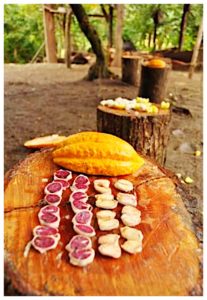 The Pure Nacional cacao yields a unique mixture of white and pale purple beans, generally in a 40:60 ratio. This is as opposed to the other varieties that typically produce either 100% of white or pale purple beans. This unique mixture is thought to contribute to the exquisite aromas and flavours of the resultant chocolate.
The Pure Nacional cacao yields a unique mixture of white and pale purple beans, generally in a 40:60 ratio. This is as opposed to the other varieties that typically produce either 100% of white or pale purple beans. This unique mixture is thought to contribute to the exquisite aromas and flavours of the resultant chocolate.
Only a select number of chocolate makers and chocolatiers worldwide have exclusive rights to the Fortunato No. 4 and to sell chocolates made from it. One such chocolate maker is Eclat Chocolate in the US, whom, in collaboration with celebrity chefs, food authors and TV personalities Eric Ripert and Anthony Bourdain, created and popularised the lavishly priced “Good and Evil Bar“, a 72% dark cocoa bar made with Fortunato No. 4 cacao.
D’Anvers Single Origin Fortunato No.4
Down Under, chocolatier Igor Ven Gerwen, of House of Anvers in Tasmania, is the holder of the exclusive rights to the Fortunato No. 4. Igor purchases couverture chocolate made from these highly prized beans and crafts them into just two varieties of single origin bars – the D’Anvers Fortunato No. 4 Peru 68% Organic Pure Nacional and the D’Anvers Fortunato No. 4 Peru 47% Cacao Milk Pure Nacional.
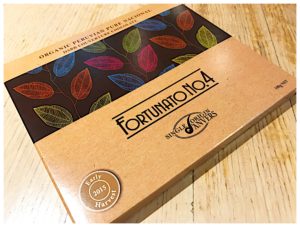 I recently purchased a bar of the D’Anvers Fortunato No. 4 Peru 68% Organic Pure Nacional, to experience and fully appreciate what all the hype and excitement is about.
I recently purchased a bar of the D’Anvers Fortunato No. 4 Peru 68% Organic Pure Nacional, to experience and fully appreciate what all the hype and excitement is about.
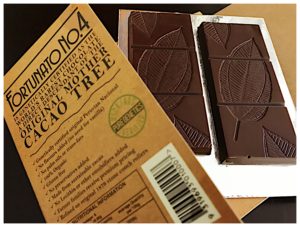 The packaging has earthy tones, reflective of the habitat of the cacao, and colourful motifs resembling leaves of the cacao trees but also the pods. Simple but meaningful. There are two small bars per pack, vacuum sealed in a separate inner packaging.
The packaging has earthy tones, reflective of the habitat of the cacao, and colourful motifs resembling leaves of the cacao trees but also the pods. Simple but meaningful. There are two small bars per pack, vacuum sealed in a separate inner packaging.
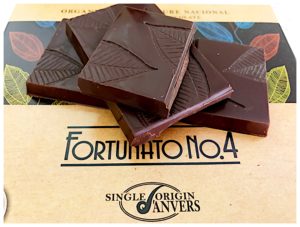 As soon as I tear open the inner packaging, I am immediately greeted by the inviting aroma of fruits, reminiscent of ripe plums. I break off a piece; the chocolate has a good snap. The initial flavours are intensely fruity, like a medley of sweet stone fruits with hints of lychee. This is followed by lengthy notes of toastiness, think roasted cashews. There is an ever so slight bitterness on the tongue as the chocolate melts, which lingers after all the chocolate has disappeared. My palate is left fresh, despite this.
As soon as I tear open the inner packaging, I am immediately greeted by the inviting aroma of fruits, reminiscent of ripe plums. I break off a piece; the chocolate has a good snap. The initial flavours are intensely fruity, like a medley of sweet stone fruits with hints of lychee. This is followed by lengthy notes of toastiness, think roasted cashews. There is an ever so slight bitterness on the tongue as the chocolate melts, which lingers after all the chocolate has disappeared. My palate is left fresh, despite this.
The Fortunato No. 4 is good. Actually, it’s really good. However, it’s not the most intense, exquisite chocolate that I have tasted. Nevetheless, throw in the intrigue, controversy and excitement surrounding the prized Fortunato No. 4 cacao and one can truly appreciate this rare bite of history.
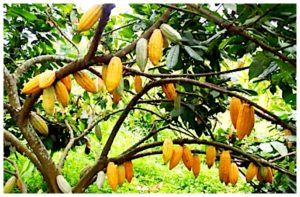 “The Project”, as Jan calls it, is his work in Latin America where he focuses on sourcing unique and rare cacao beans, and works with the farmers who cultivate, harvest and ferment these beans, either in small groups or cooperatives. It’s not just about the chocolate. For Jan and the company that he represents,
“The Project”, as Jan calls it, is his work in Latin America where he focuses on sourcing unique and rare cacao beans, and works with the farmers who cultivate, harvest and ferment these beans, either in small groups or cooperatives. It’s not just about the chocolate. For Jan and the company that he represents, 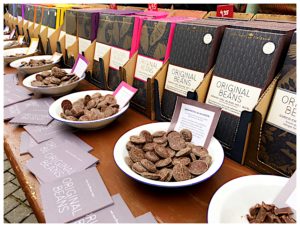 Through
Through 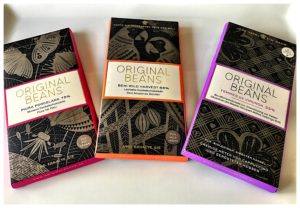 Now, let’s steer back towards the more familiar end of the value chain, to the beans and chocolates. How do they actually taste? I had the opportunity to sample the entire range at ChocolART and purchased 3 to savour at my leisure – the Piura Porcelana Peru 75%, Beni Wild Harvest Bolivia 66% and Femmes De Virunga Congo 55%.
Now, let’s steer back towards the more familiar end of the value chain, to the beans and chocolates. How do they actually taste? I had the opportunity to sample the entire range at ChocolART and purchased 3 to savour at my leisure – the Piura Porcelana Peru 75%, Beni Wild Harvest Bolivia 66% and Femmes De Virunga Congo 55%.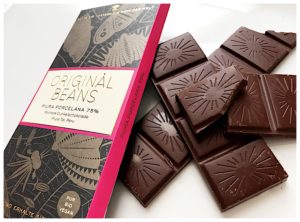 This bar has rich fruity aromas of berries, and a slight hint of earthiness. The chocolate is well tempered, as evidenced by the characteristic snap. The initial flavour is that of citrus peel, slightly acidic but refreshing. This gives way to the flavours of sweet berries and fleeting notes of prunes. The chocolate leaves a tad of acidity on my tongue. It’s a pretty good bar of chocolate with lots of fruity flavours – just as I’d expect in a Porcelana.
This bar has rich fruity aromas of berries, and a slight hint of earthiness. The chocolate is well tempered, as evidenced by the characteristic snap. The initial flavour is that of citrus peel, slightly acidic but refreshing. This gives way to the flavours of sweet berries and fleeting notes of prunes. The chocolate leaves a tad of acidity on my tongue. It’s a pretty good bar of chocolate with lots of fruity flavours – just as I’d expect in a Porcelana. This bar has the aroma of mushrooms and a scent that closely resembles Manuka honey. The chocolate is well tempered. The initial flavour is of mild mushrooms but this opens up to reveal lengthy notes of sweet fruits and hints of hazelnuts. The finish is subtle – I can just detect notes of roasted tea leaves. Once all the chocolate has melted, my mouth is left fresh. Such complex aromas and flavours in a chocolate – I’m surprised to have enjoyed this more than the Piura Porcelana!
This bar has the aroma of mushrooms and a scent that closely resembles Manuka honey. The chocolate is well tempered. The initial flavour is of mild mushrooms but this opens up to reveal lengthy notes of sweet fruits and hints of hazelnuts. The finish is subtle – I can just detect notes of roasted tea leaves. Once all the chocolate has melted, my mouth is left fresh. Such complex aromas and flavours in a chocolate – I’m surprised to have enjoyed this more than the Piura Porcelana!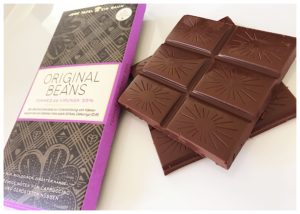 The aroma is toasty, nutty and slight earthy. The colour of the chocolate is a cross betweeen milk and dark chocolate, the result of the high cocoa content of this milk chocolate bar. The tempering is adequate, as evidenced by the sheen on the surface and the slight snap of the chocolate. As the chocolate melts in my mouth, the texture is creamy and smooth. The flavour is distinctly nutty, with hints of caramel. I can also detect subtle notes of roasted coffee beans at the end. Once all the chocolate has melted, it leaves a very mild bitter aftertaste in my mouth. The flavours are bold and interesting, as far as milk chocolate goes. If only all milk chocolates tasted this way….
The aroma is toasty, nutty and slight earthy. The colour of the chocolate is a cross betweeen milk and dark chocolate, the result of the high cocoa content of this milk chocolate bar. The tempering is adequate, as evidenced by the sheen on the surface and the slight snap of the chocolate. As the chocolate melts in my mouth, the texture is creamy and smooth. The flavour is distinctly nutty, with hints of caramel. I can also detect subtle notes of roasted coffee beans at the end. Once all the chocolate has melted, it leaves a very mild bitter aftertaste in my mouth. The flavours are bold and interesting, as far as milk chocolate goes. If only all milk chocolates tasted this way….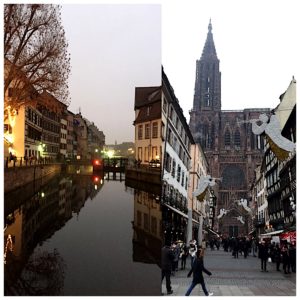 A city with meandering cobblestone streets lined with charming medieval timber-framed houses, each with a bilingual street name. A river encircling the Old Town that separates the old from new and runs into canals around the city, creating the most picturesque photography backdrop. And as Christmas approaches each year, a transformation into an enchanting winter wonderland complete with themed fairy lights, intricate decorations adorning medieval houses, a giant Christmas tree and the most amazing Christmas markets.
A city with meandering cobblestone streets lined with charming medieval timber-framed houses, each with a bilingual street name. A river encircling the Old Town that separates the old from new and runs into canals around the city, creating the most picturesque photography backdrop. And as Christmas approaches each year, a transformation into an enchanting winter wonderland complete with themed fairy lights, intricate decorations adorning medieval houses, a giant Christmas tree and the most amazing Christmas markets.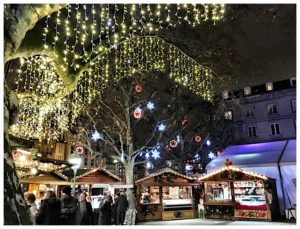
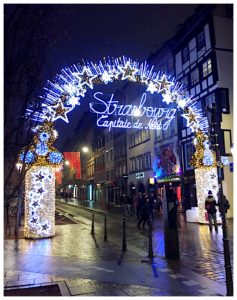
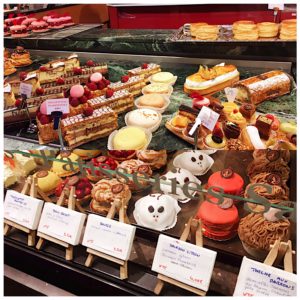 Thanks to my colleague and Strasbourg native, Fred, hubby and I were well equipped for our gastronomic discovery of the many sweet and savoury delights on offer, chocolates included.
Thanks to my colleague and Strasbourg native, Fred, hubby and I were well equipped for our gastronomic discovery of the many sweet and savoury delights on offer, chocolates included.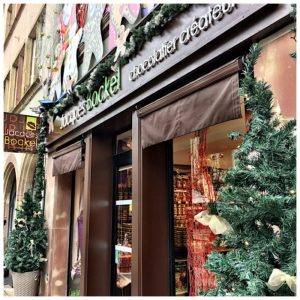
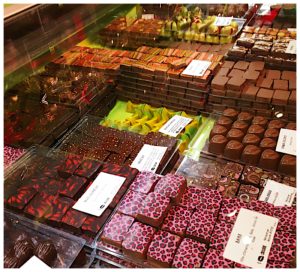 Here, you will find the cutest Christmas les maenneles. These are chocolate man-shaped miniature figurines,
Here, you will find the cutest Christmas les maenneles. These are chocolate man-shaped miniature figurines, 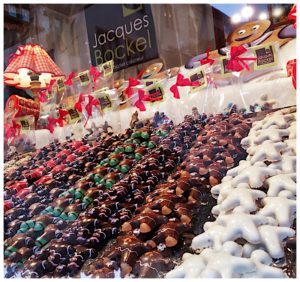 Don’t forget the Nut Alsace spread while you’re here. It’s a hazelnut chocolate spread in 4 flavours – think Nutella, only tastier. Ask for a tasting, straight from the fountain, and you will not be disappointed.
Don’t forget the Nut Alsace spread while you’re here. It’s a hazelnut chocolate spread in 4 flavours – think Nutella, only tastier. Ask for a tasting, straight from the fountain, and you will not be disappointed.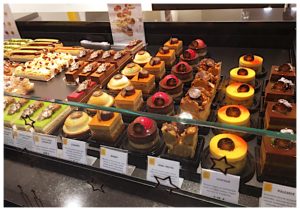
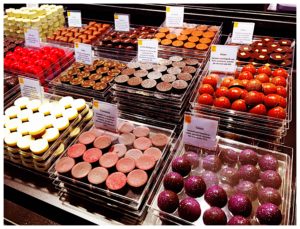 Hazelnuts and almonds feature heavily in the bon bons, but there are also unique flavours like bergamot and exotic fruits, all coated in 70% Venezuelan dark chocolate, 40% milk chocolate or white chocolate.
Hazelnuts and almonds feature heavily in the bon bons, but there are also unique flavours like bergamot and exotic fruits, all coated in 70% Venezuelan dark chocolate, 40% milk chocolate or white chocolate.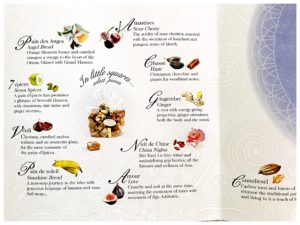 Head to
Head to 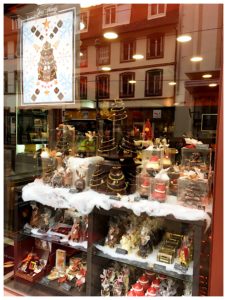
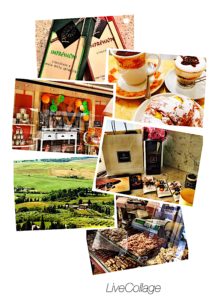 1. Self-guided discovery of the Tuscan Chocolate Valley, Italy with hubby in the driver’s seat. The experience of navigating and getting lost along narrow, winding and almost deserted country roads, amidst the rolling green Tuscan hills and golden fields, in search of
1. Self-guided discovery of the Tuscan Chocolate Valley, Italy with hubby in the driver’s seat. The experience of navigating and getting lost along narrow, winding and almost deserted country roads, amidst the rolling green Tuscan hills and golden fields, in search of 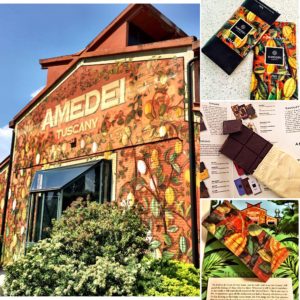 2. The chocolate tour/ tasting at the
2. The chocolate tour/ tasting at the 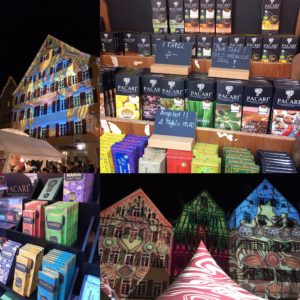 3. Attending
3. Attending 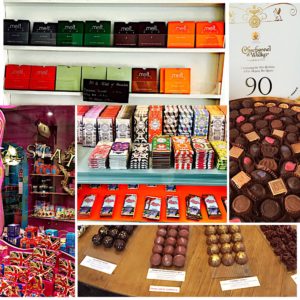 4. Self-guided chocolate discovery of London, UK with hubby’s skillful navigation on a bicycle, in search of the latest chocolate trends and flavours as well as the Queen’s favourite chocolates. We achieved a lot in 6 hours, covering top contemporary chocolate shops like
4. Self-guided chocolate discovery of London, UK with hubby’s skillful navigation on a bicycle, in search of the latest chocolate trends and flavours as well as the Queen’s favourite chocolates. We achieved a lot in 6 hours, covering top contemporary chocolate shops like 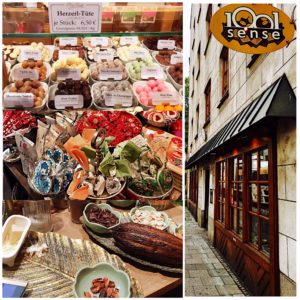 6. Self-guided chocolate discovery of Munich, Germany. Through this experience, I have met some of the most passionate chocolate friends, namely Inna from
6. Self-guided chocolate discovery of Munich, Germany. Through this experience, I have met some of the most passionate chocolate friends, namely Inna from 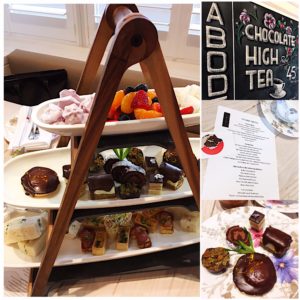 7. Chocolate High Tea at the
7. Chocolate High Tea at the 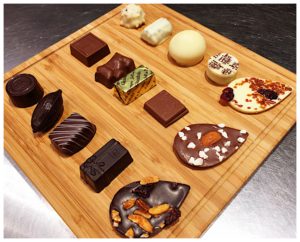 9. Attending my first “by invitation only” chocolate tasting at
9. Attending my first “by invitation only” chocolate tasting at 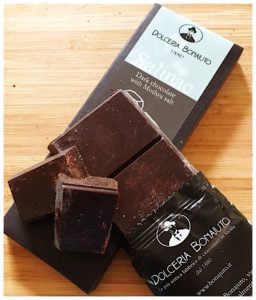 10. Experiencing chocolate closer to its native form, xocoatl, courtesy of my chance discovery of
10. Experiencing chocolate closer to its native form, xocoatl, courtesy of my chance discovery of 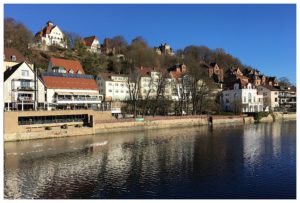 Imagine…..a charming and peaceful small university town, with a population of under a hundred thousand inhabitants.
Imagine…..a charming and peaceful small university town, with a population of under a hundred thousand inhabitants.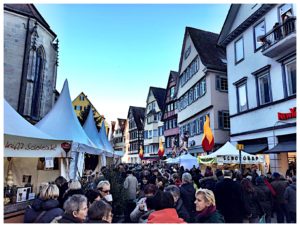 It’s not widely publicised compared to other more high profile chocolate events like the International Chocolate Awards, Eurochocolate, Salon du Chocolat, The Northwest Chocolate Festival or the World Chocolate Masters. However, the idea of visiting a new, lesser known town and broadening my knowledge on German chocolates highly appealed to me.
It’s not widely publicised compared to other more high profile chocolate events like the International Chocolate Awards, Eurochocolate, Salon du Chocolat, The Northwest Chocolate Festival or the World Chocolate Masters. However, the idea of visiting a new, lesser known town and broadening my knowledge on German chocolates highly appealed to me.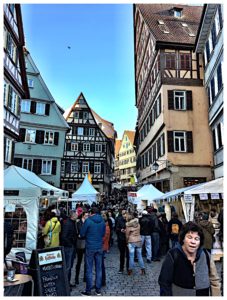 The cobbled stone streets snaking up to the Old Town are lined with stall after stall of chocolates and related products. From chocolate bars, filled chocolates/ pralines, cakes, biscuits, nougat and panforte to crepes, waffles, pancakes, traditional German treats, hot chocolate, chocolate beer and even chocolate jewellery! There are also chocolate workshops, tastings and chocolate art exhibitions. Essentially, something for everyone.
The cobbled stone streets snaking up to the Old Town are lined with stall after stall of chocolates and related products. From chocolate bars, filled chocolates/ pralines, cakes, biscuits, nougat and panforte to crepes, waffles, pancakes, traditional German treats, hot chocolate, chocolate beer and even chocolate jewellery! There are also chocolate workshops, tastings and chocolate art exhibitions. Essentially, something for everyone.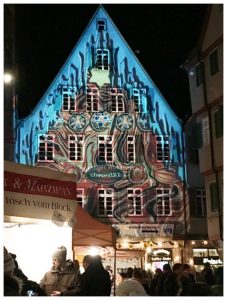 When the sun sets on the charming Old Town, a treat awaits its visitors. A captivating light show of chocolate inspired art is projected onto the beautiful old buildings. Chocolate has never looked so beautiful in the dark.
When the sun sets on the charming Old Town, a treat awaits its visitors. A captivating light show of chocolate inspired art is projected onto the beautiful old buildings. Chocolate has never looked so beautiful in the dark.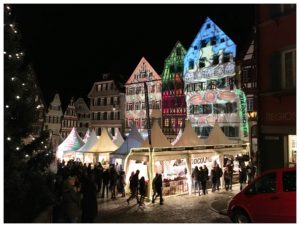 In terms of the actual piece de resistance, where do I even begin?! There are so many chocolate brands, mainly artisanal; some that I have encountered and many that I have not from Germany, Italy, Switzerland, Netherlands, Czech Republic, and even Vietnam and Ecuador. Schell, Weber & Weiss, Kallari, Zotter, Pacari, Marou, Chapon, Chocami, Original Beans and Bean to Ciok, to name a few. Stay tuned for future posts on these discoveries.
In terms of the actual piece de resistance, where do I even begin?! There are so many chocolate brands, mainly artisanal; some that I have encountered and many that I have not from Germany, Italy, Switzerland, Netherlands, Czech Republic, and even Vietnam and Ecuador. Schell, Weber & Weiss, Kallari, Zotter, Pacari, Marou, Chapon, Chocami, Original Beans and Bean to Ciok, to name a few. Stay tuned for future posts on these discoveries.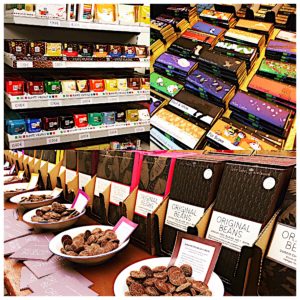 I have come to realise that
I have come to realise that 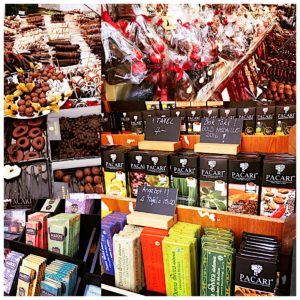 Does this rate as an ultimate chocolate experience? How can it not, for celebrating chocolate in all its beauty and forms!
Does this rate as an ultimate chocolate experience? How can it not, for celebrating chocolate in all its beauty and forms!